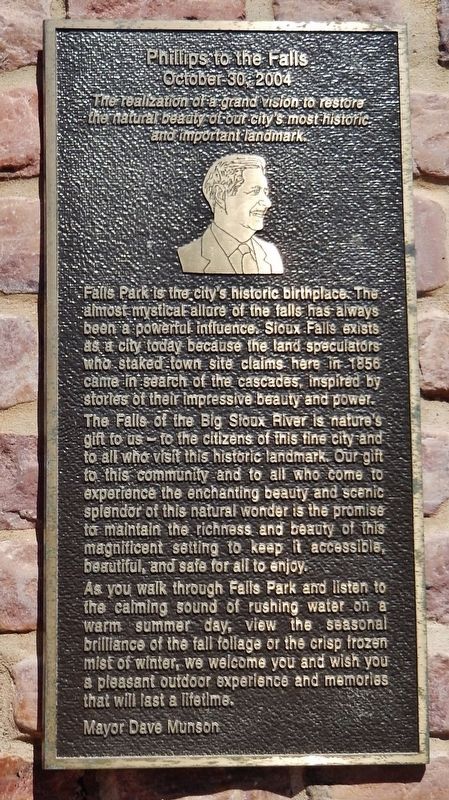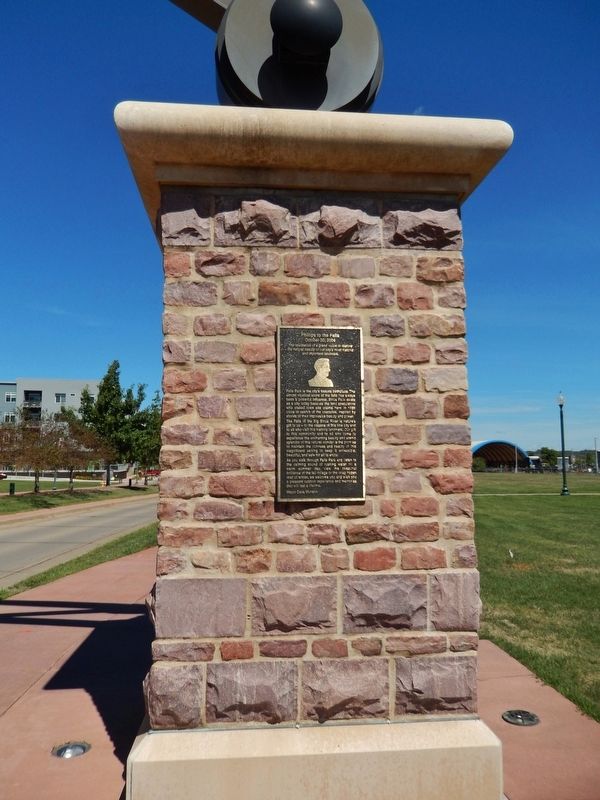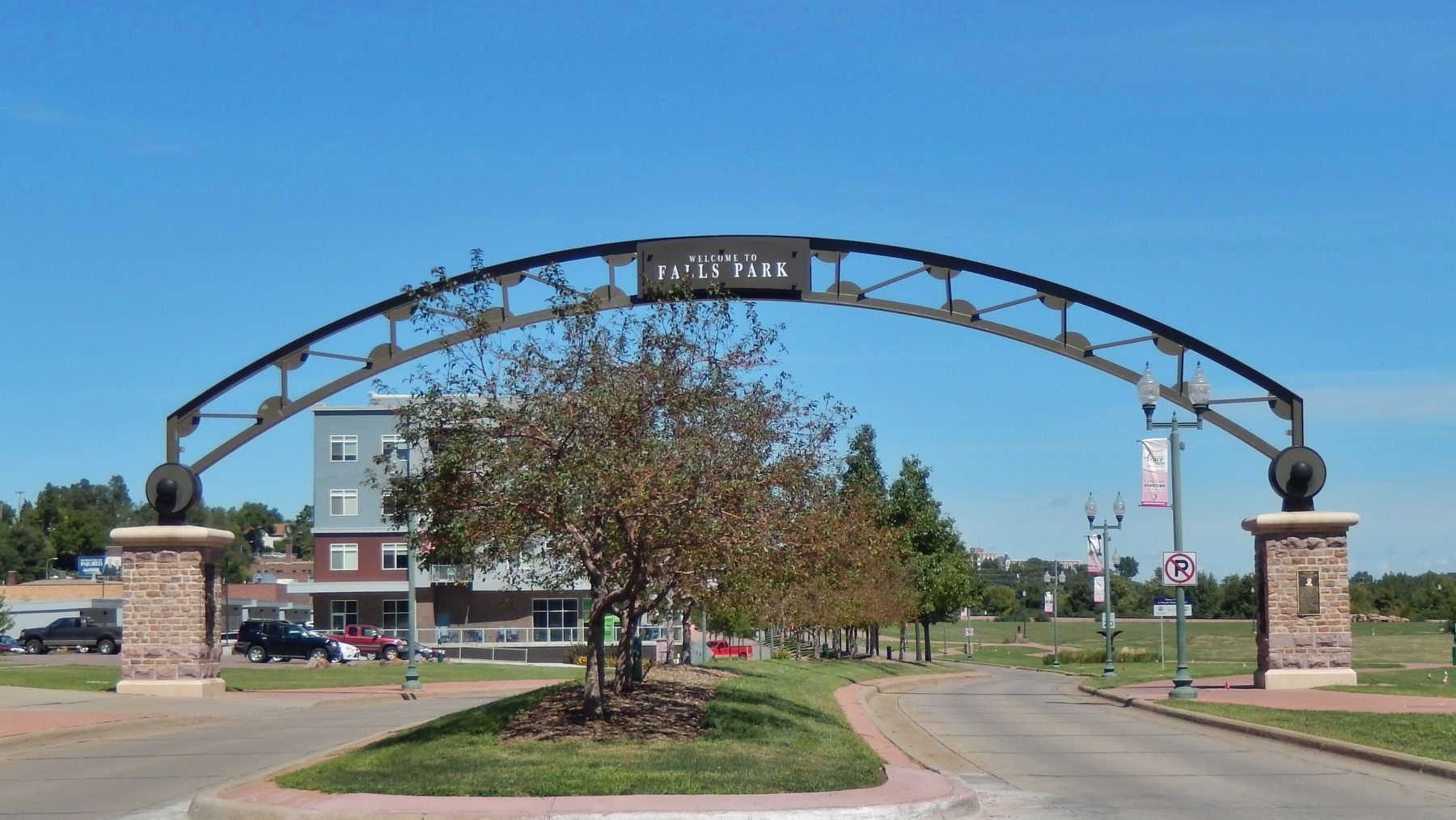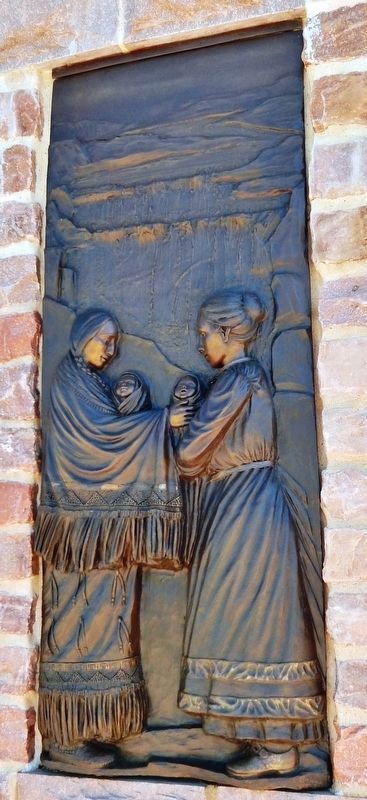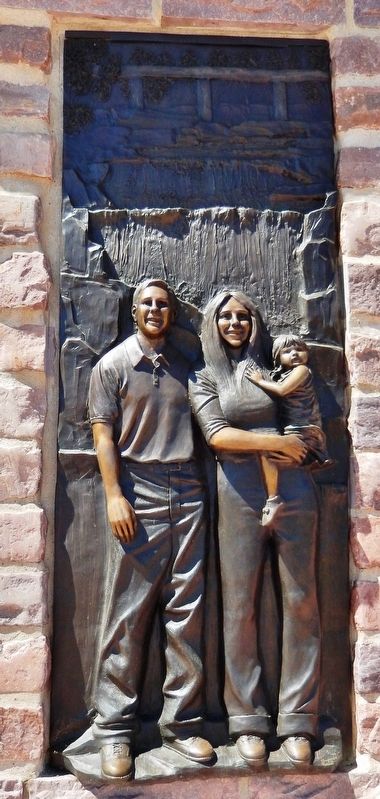Downtown in Sioux Falls in Minnehaha County, South Dakota — The American Midwest (Upper Plains)
Phillips to the Falls
October 30, 2004
the natural beauty of our city’s most historic
and important landmark
Falls Park is the city’s historic birthplace. The almost mystical allure of the falls has always been a powerful influence. Sioux Falls exists as a city today because the land speculators who staked town site claims here in 1856 came in search of the cascades, inspired by stories of their impressive beauty and power. The Falls of the Big Sioux River is nature’s gift to us – to the citizens of this fine city and to all who visit this historic landmark. Our gift to this community and to all who come to experience the enchanting beauty and scenic splendor of this natural wonder is the promise to maintain the richness and beauty of this magnificent setting to keep it accessible, beautiful, and safe for all to enjoy.
As you walk through Falls Park and listen to the calming sound of rushing water on a warm summer day, view the seasonal brilliance of the fall foliage or the crisp frozen mist of winter, we welcome you and wish you a pleasant outdoor experience and memories that will last a lifetime.
Mayor Dave Munson
Erected 2004.
Topics. This historical marker is listed in these topic lists: Natural Resources • Parks & Recreational Areas • Settlements & Settlers • Waterways & Vessels. A significant historical year for this entry is 1856.
Location. 43° 33.178′ N, 96° 43.6′ W. Marker is in Sioux Falls, South Dakota, in Minnehaha County. It is in Downtown. Marker is on North Phillips Avenue north of West 5th Street, on the right when traveling north. Marker is a large metal plaque, mounted at eye-level on the south side of the east supporting pedestal of the "Welcome to Falls Park" arch over Phillips Avenue. Touch for map. Marker is at or near this postal address: North Phillips Avenue, Sioux Falls SD 57104, United States of America. Touch for directions.
Other nearby markers. At least 8 other markers are within walking distance of this marker. Richard Franklin Pettigrew (within shouting distance of this marker); President William McKinley (within shouting distance of this marker); Jewett Bros. & Jewett Warehouse (about 300 feet away, measured in a direct line); The Coliseum (about 500 feet away); Dakota Iron Store (about 500 feet away); President Woodrow Wilson (about 600 feet away); Divorce Capital (about 600 feet away); The Andrew Kuehn Company (about 600 feet away). Touch for a list and map of all markers in Sioux Falls.
Also see . . .
1. Falls on Big Sioux River Attract Settlers. Attracted by the economic potential of the Sioux Falls on the Big Sioux River, Dr. George M. Staples of Dubuque, Iowa, organized Western Town near the falls in 1856. Staples and his group hoped that the settlement would become the capital of the Territory of Dakota, but it was not chosen. Instead, in the winter of 1856, the Legislature of Minnesota Territory chartered the Dakota Land Company and established the town of Sioux Falls. In the last decades of the nineteenth century, Northern European immigrants were attracted to the Territory of Dakota, which resembled their homeland. The establishment of rail transport in the area in 1878 enabled locals to begin shipping "Sioux Falls granite," a pink quartzite bedrock second only to diamond in hardness. (Submitted on October 12, 2018, by Cosmos Mariner of Cape Canaveral, Florida.)
2. Falls History. The Falls of the Big Sioux River have been a focus of life in the region throughout history. Native American peoples were the first to visit the falls and bring stories of them to European explorers. They have been the center of recreation and industry since the founding of the city in 1856. (Submitted on October 12, 2018, by Cosmos Mariner of Cape Canaveral, Florida.)
Credits. This page was last revised on February 16, 2023. It was originally submitted on October 11, 2018, by Cosmos Mariner of Cape Canaveral, Florida. This page has been viewed 243 times since then and 35 times this year. Photos: 1, 2, 3, 4, 5. submitted on October 12, 2018, by Cosmos Mariner of Cape Canaveral, Florida. • Andrew Ruppenstein was the editor who published this page.
